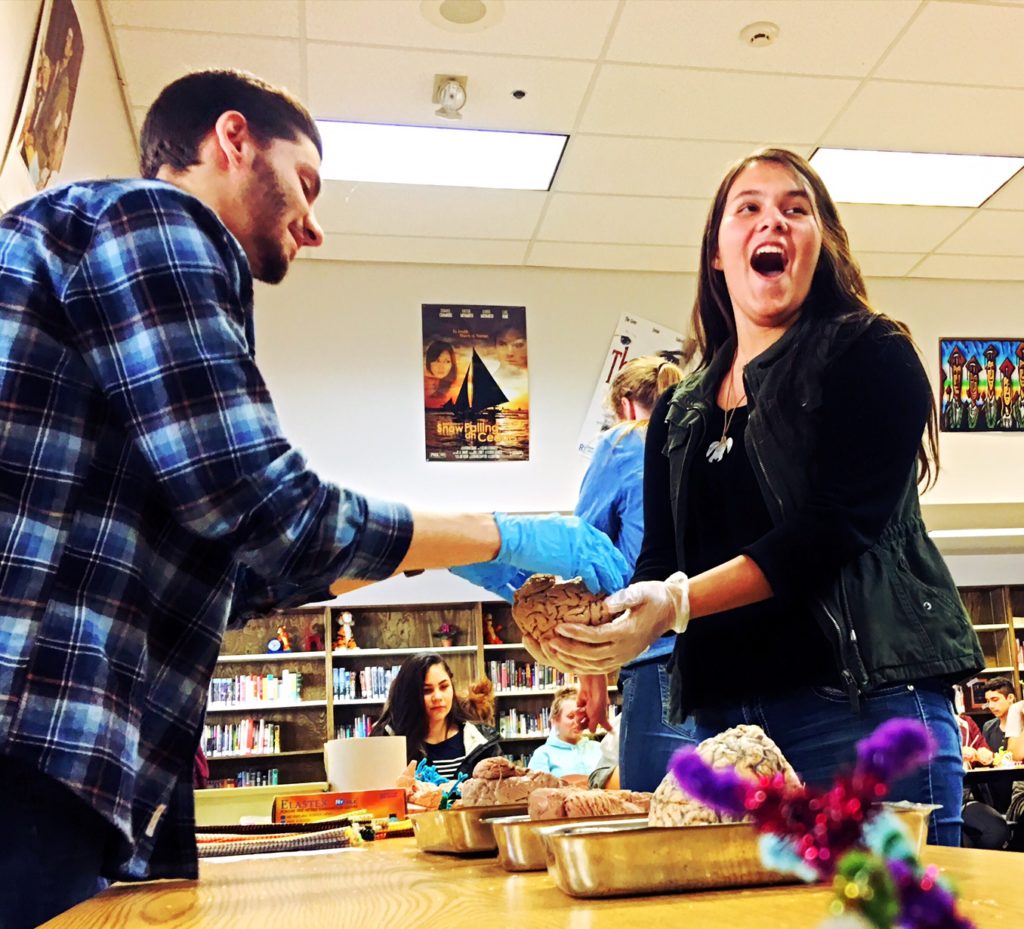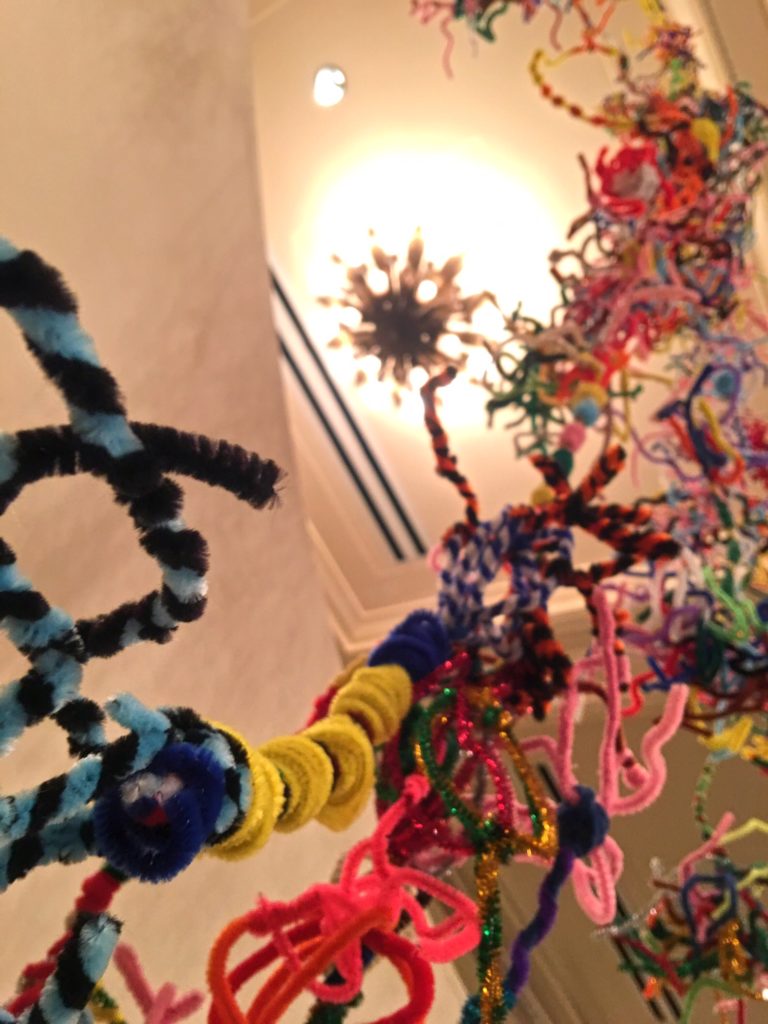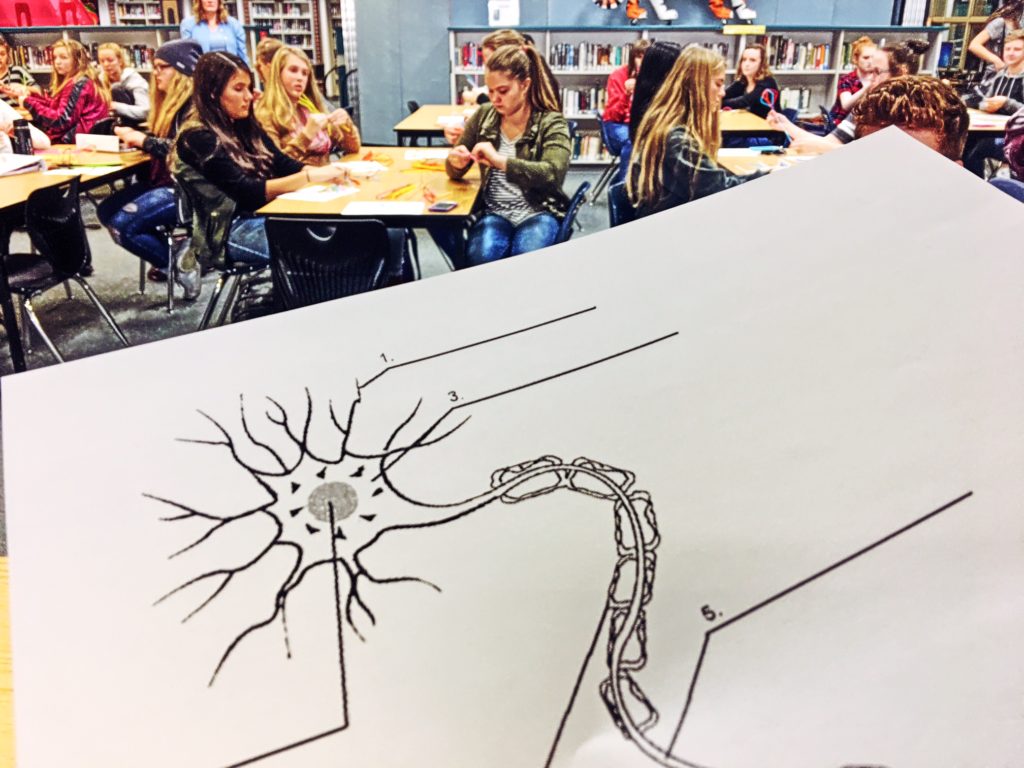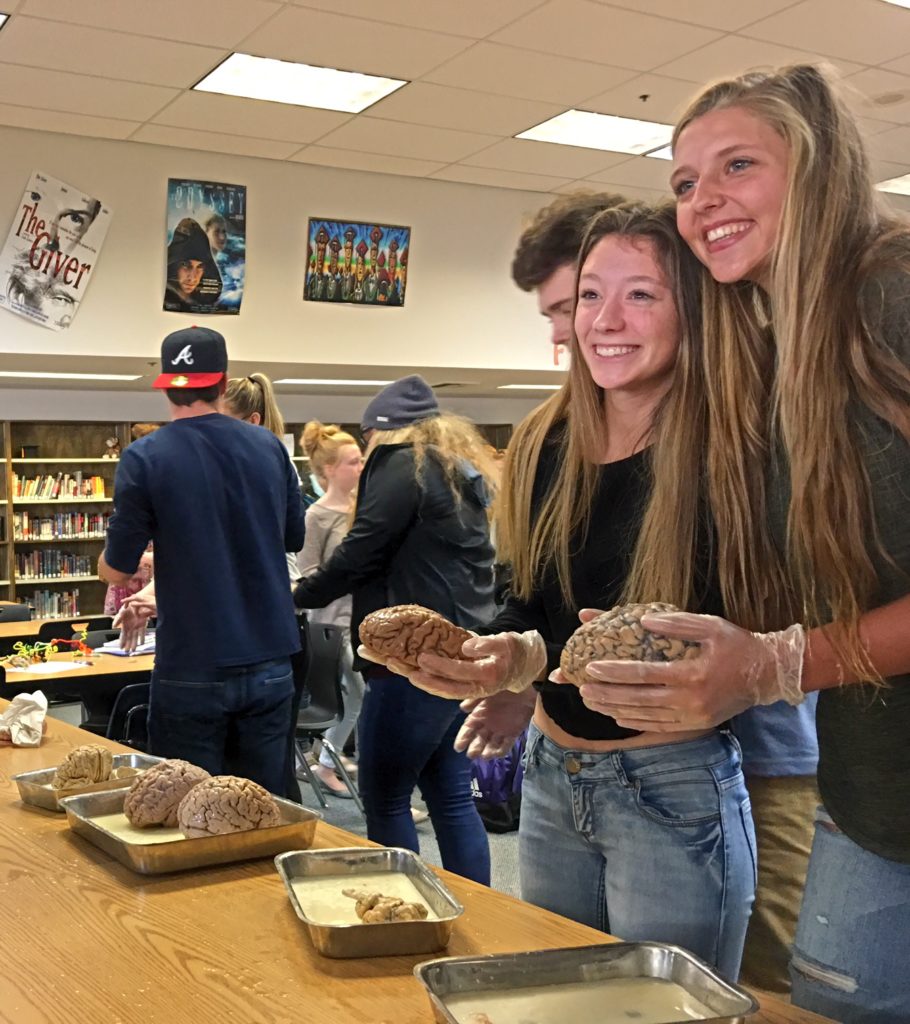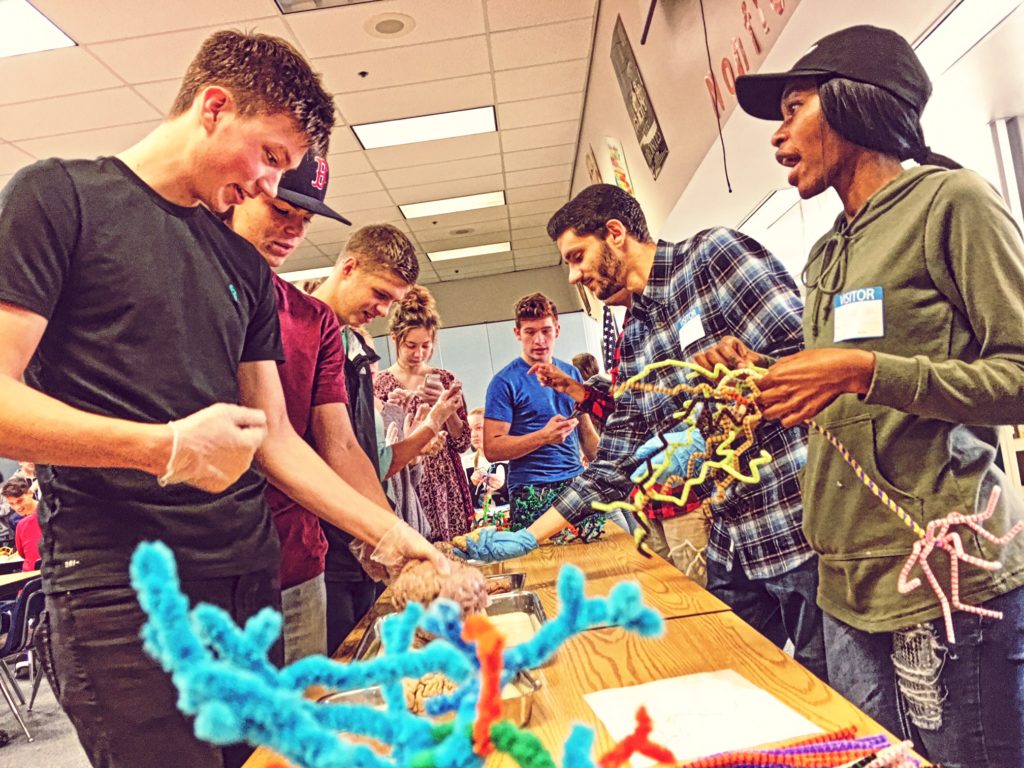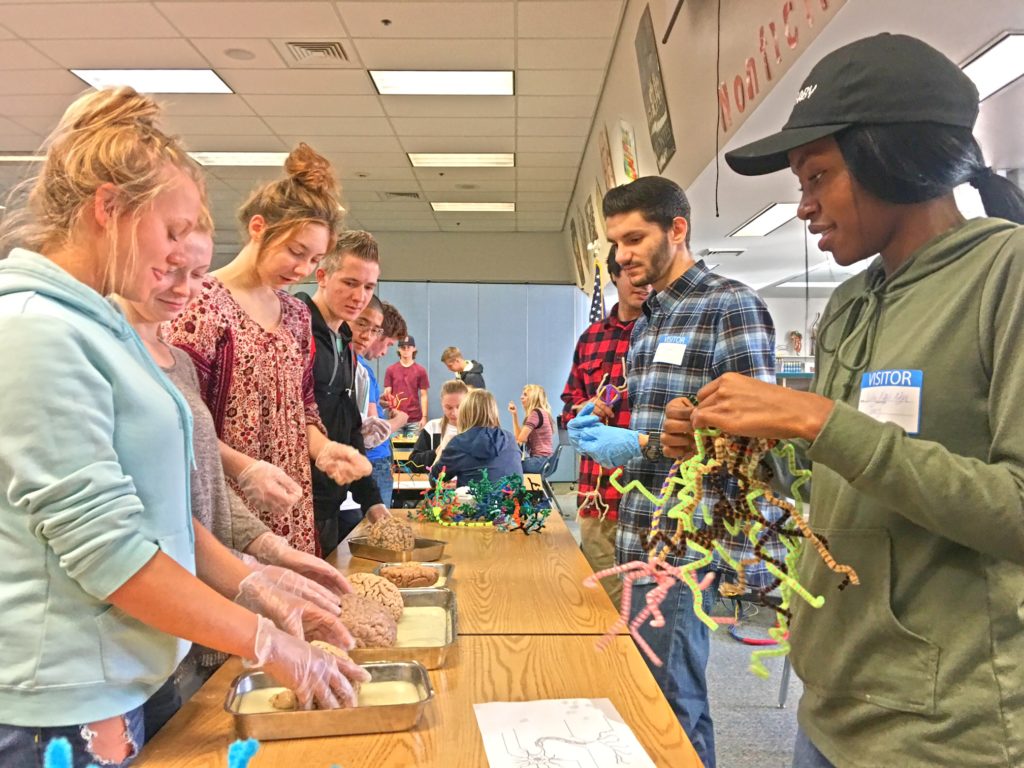On a day when the fate of evidence-based research investment appeared uncertain, we brought our engaged, curious, future oriented undergraduates to meet the energetic students at Battle Ground High…
EXPLORE MORE: Science under President Trump (Nature)
Julia Gruszceki, Joey Seuferling, Gianfranco DiCarlo, Sabrina Polehn, Valerie Teegardin, Zander Eisenhower, Maria Honsowetz, Chad Foster, Vicki Nganga and Tommy Culhane from WSU Vancouver, and Andrew Stanley, Jesse Hamlin and Allie Clark from Psychology at Portland State University introduced themselves, and talked about the fascination they feel studying the brain’s structure and those billions of wiry cells (neurons) that link up to form you…
We had an audience of about 100 high school students who were eager to ask questions about neurons, brains, and brain development, and about what current research on drugs, memory, sleep, pain, ADHD, depression, anxiety, hearing loss, Parkinson’s, hallucinations, schizophrenia, synesthesia, implicit bias, and a host of other compelling topics is telling us about how our nervous system works…
We then focused on neurons, and discussed various structural regions of these cells, including the dendrites that permit them to receive and integrate multiple inputs, both excitatory and inhibitory, and the axons that transmit their electrical output to other brain cells at gaps called synapses…
Students then had a chance to craft their own neurons…
MAKE YOUR OWN NEURONS
LEARN MORE: Pipe Cleaner Neuron Project Background
CREATE: How to Make a Pipe Cleaner Neuron
As students twisted colorful pipe cleaners into dendrites, cell bodies, and axons, we explained how our own brain cells busily wire together in distributed networks, which channel information along ever more effective pathways as our brains, particularly some areas in the frontal lobes and their axonal connections with neurons in other networked regions, develop during adolescence…
EXPLORE MORE: The Teen Brain: Still Under Construction (NIH)
Making social errors and mistakes – sometimes disastrous – is normal, and helps drive changes in synaptic connections that allow for better decision making in the future. Experience, consequences, time and guidance for reflection on behavior can help wire up cells, and either prune or strengthen specific connections that contribute to more successful social engagement…
Afterwards our volunteers introduced our selection of human and animal brains! It was another great opportunity for questions, contemplation, and reflection on the organ capable of extraordinary perceptual and cognitive responses to our physical and social environments – and those complex behavioral steps required to make this a better world…
Many thanks to Christie Schultz, and the teachers, staff and students of Battle Ground High School for welcoming us to the best “battle ground” we got to hear about all day



